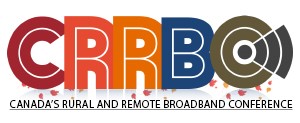
By Ahmad Hathout
CONNECTING RURAL AND remote communities isn’t just about deployment, it’s also about helping communities less experienced and able with applications for funding, Canada’s Rural & Remote Broadband Conference heard Friday.
Accessing funding from the provincial and federal governments has been such an issue for some communities that Innovation Canada instituted a “pathfinder” system to help guide applicants of its $1.75-billion Universal Broadband Fund program, which launched in November.
However, to get communities connected to resources (because there are multiple funds available from mutliple agencies and levels of government), there needs to be a multi-level collaboration to ensure that needs are heard and applications are done right, according to Colleen McCormick, connected communities lead with British Columbia’s Ministry of Citizens’ Services.
“There’s a capacity issue there… for these communities to get ready to access these funds, so for us all to kind of play a role in facilitating those submissions, those proposals, bringing partners together…what are the needs, who are the potential partners, how can we facilitate mutual interest and opportunity here, so that’s where we’re all working nonstop to try to address that,” McCormick said. “But together I think we have a way better chance of addressing this in a meaningful way.”
In September, the B.C. government pledged $90 million toward its Connecting British Columbia program for the rapid “expansion of both cellular projects and fixed wireless broadband projects.”
McCormick alluded to the fact that some communities don’t have anywhere near the 50/10 speed target, and the challenge is, “how do we get communities who have very little connectivity to at least a better standard as we move forward on the sort of spectrum of getting the communities to the level that we’d all like to see them have access to.”
Despite the universal objective set at 50 Mbps download and 10 Mbps upload, the province’s $90 million fast track will accept applications for projects that deliver a minimum of 25 Mbps download and 5 Mbps upload to the home by October 31, 2021 — though it still prefers the benchmark 50/10.
The Government of the Northwest Territories faced similar concerns from members of the legislative assembly about being ahead on preparing applications. In October, some MLAs were concerned they may not see high-speed internet for a long time if the region became reliant on the dominant provider, Bell’s Northwestel, and alleged the finance department has not put forward plans to prepare for federal funding opportunities.
At the same time, there’s a concern that even improvements using government funding are still not close to meeting the benchmark. Madeleine Redfern, a former mayor of Iqaluit, said Friday federal money that went to Northwestel that improved speeds in her hometown by three times but only raised the download speed to 15 Mbps. And even then, telecommunications costs are still too expensive.
She said that means the government must prioritize areas based on availability of connectivity and Redfern is pushing that hard in Nunavut as her company, Nuvujaq, pushes to build an Internet Exchange in the far north.
“It does mean we find ourselves falling further and further behind because we don’t have affordable and reliable connectivity in this country. So I think when the government says it’s going to spend $1.75 billion to deal with the digital divide, we’ve got to prioritize the areas of our country that have the least level of connectivity and the least level of access,” Redfern said.
“We have to really change the way we have been putting out our national subsidy program across the country.”



